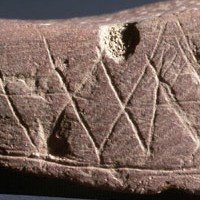Menu
Lapidary - A brief History
The mundane activities of prehistoric man could be considered the beginning of lapidary. Lapidary is the skill of cutting, polishing, and the sculpturing of rocks and gemstones. It is a science in itself but most delve into Lapidary as a hobby and for some folks, a home based business. During prehistoric times some caveman may have observed a stone which may have fallen into a fire where heat may have caused it to crack, break, or even flake apart. A sharp edge may have been the result of the fracture. You know that flint and other types of stones do have sharp edges, but a blade like cutting edge could have tweaked the interest of a caveman giving him some unique ideas.


We know that prehistoric man hammered and scraped tools from stone. He did this, more likely but smacking one stone against another softer stone. He also used one stone to grind down into shape another stone thereby forming some very crude implements (tools). Early man scratched out symbols in the rocks. Early man discovered hardness. He learned that some rocks were harder than others. He probably learned that some rocks also have some forms of cleavage where he could split the rocks at certain angles or even planes (slate).
From the knowledge gained, early man learned how to drill and brute (the shaping of stones into figures or shapes) the stones. One of the first Lapidary arts was drilling (making holes). It goes back in time about 1 million years. As early man continued to experiment he learned that breakage could be controlled. And knowing the theories of hardness led to bruiting. Early man learned that he could rub one stone against another, a tedious practice, allowing him to shape his stones, and as he discovered the gemstones, crude figurines and jewelry became possible.

Menu
